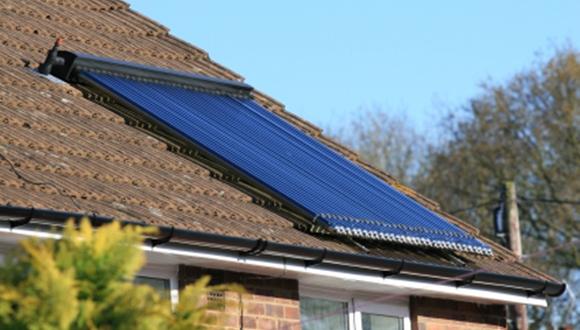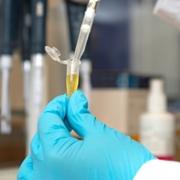Thermoelectric effects in concentrating photovoltaic cells
Student: Nimrod Ari
Advisor: Prof. Avi Kribus
Student: Nimrod Ari
Advisor: Prof. Avi Kribus
To date, photovoltaic cells convert most of the absorbed photon energy to heat. In Concentrating Photovoltaic (CPV) cells subject to high incident radiation flux, the collection of generated electrical charge carriers by electrical conduction creates very high current densities and the removal of heat by thermal conduction creates a significant heat flux. This work explores the phenomena related to the interaction between heat transfer and electricity and establishes its impact on the electrical and thermal performance of CPV cells. The thermoelectric effects are considered as potential contributors to the prevailing gap between theoretical and experimental results of CPV cells performance, since current cell models contain no reference or attribution to thermoelectric effects.
Impelled by the gap in results, the impact of the Thomson and the Peltier thermoelectric effects is identified, separately estimated and found to be non-negligible. It is found that the Thomson effect can increase or decrease the electrical power output of Ge-based CPV cells, an effect comparable in magnitude to the impact of the cell series resistance. For the first time the Thomson effect is presented as an effective positive or negative electrical resistance in the cell and the classic diode equation is extended to include the effect. It is found that the Peltier effect can significantly increase or decrease the temperature gradient and therefore the junctions’ temperature within Ge-based CPV cells. It is also shown that the impact of the Thomson and the Peltier effects on other CPV cells based on different materials and other high power optoelectronic devices may also be measureable under high concentration or high current densities. It is suggested that if a cell substrate material with a substantially increased Seebeck coefficient could be chosen, then the gain in electrical conversion efficiency of the cell and/or reduction in temperature gradient across the cell would favorably lead to a significant enhancement in cell performance.
Then, the combined impact of the thermoelectric effects is rigorously analyzed in a detailed 1D model, numerically simulated, and evaluated against the earlier estimations. The evaluation yields results that validate earlier estimations and shed light on additional, so far unnoticed, impact of the thermoelectric effects together with a contribution of a thermoelectric potential. The additional impact of the effects and the thermoelectric potential generates a gain in electrical performance and a reduction in the temperature gradient at zero net current conditions, unlike in the earlier estimations. The 1D analysis and computation also for the first time yield the temperature distribution across the cell. The Temperature gradient is found to be linear with expected changes in size that correspond with changes in the heat flux through the cell and with the inclusion or exclusion of the impact of the thermoelectric effects. It is suggested and then verified in computation that with the impact of the thermoelectric effects, a hypothetically increased heat flux from the top subcells, while operating at the same current level, will generate an increase in the subcell’s operating voltage, suggesting an increase in the electrical conversion efficiency.
To validate this work’s theoretical results, specific experimental future work is suggested such as the measurement of the specific Thomson and Peltier effects impacts and the measurement of the change in electrical performance with increased heat flux from the top subcells.
In all, this work finds and describes the non-negligible impact of thermoelectric effects on the performance of CPV cells and demonstrates that it would be advantageous to refer to thermoelectric effects in CPV cell models towards a potential enhancement to future device design and performance in CPV cells and similar high power optoelectronic devices.




